by tmoffett | Jan 26, 2011 | Color, Landscape, Photographic Philosophy
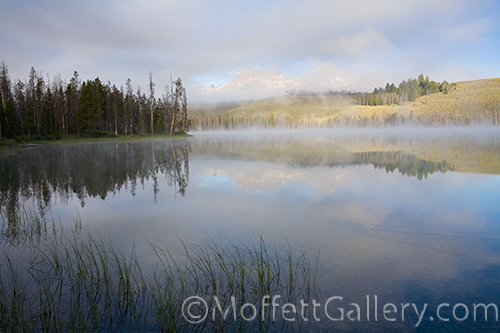
Reflections, Little Redfish Lake
What is style in photography? Is it important to have a style? How do you develop a style?
These are questions that I am frequently asked when teaching and mentoring, so I thought it would be a good topic to discuss here. Style is the unique characteristics of an artists work that differentiates them from other artists. It is very important to have your own style in order to succeed as an artist. Style is what makes you identifiable. Without it, why would anyone want to own one of your photographs? That identifiable style is what will make your images valuable.
I have found that consciously developing a style is difficult. A style will develop on its own as you learn to shoot from the heart. You can practice technique, and, as you do you will begin to find your own style. You will be drawn to certain subject mater or certain lighting conditions. The more you photograph the more defined a style will become. While studying other photographers images and identifying with others work that you enjoy will assist you in identifying your own style, I don’t believe that style development can be pushed. It will just happen as you study and practice. The more you photograph the faster it will develop.
I remember the first time I realized that I had a recognizable style. I had been working tirelessly on a set of images to be displayed in a gallery early on in my career. After delivering the images to the gallery and getting them hung I stepped back to look at the work as a whole. I was taken aback as I could see similarities that tied the individual images together into one work. I could see myself in the photographs in a way I never before had. It was inspiring to see. I had seen it in other artists work, but never before in my own. Since that day years ago, I have noticed my style evolve and become more refined. It continues to change in a way that defines who I am as an artist. My life, my thoughts, by beliefs. My style is who I am.
by tmoffett | Jan 24, 2011 | Color, Composition, Landscape, Photo tips
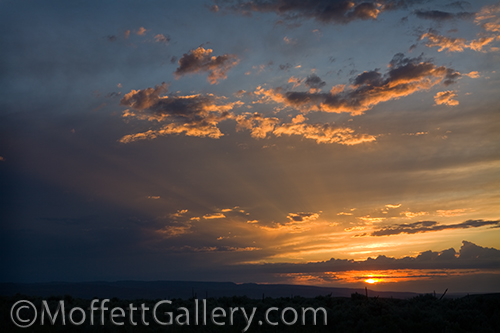
Sunset, Cassia County, Idaho
Sunsets are wonderful. Never the same, they provide so much opportunity to explore color and light. Some are subtle, filling the sky with pastels while others vibrant and deep. Nearly always, though, you will find at least some patches of blue that complement the reds and oranges that fill the sky, adding depth to an already beautiful scene.
While it seems that such incredible scenes are hard to go wrong with in photography, taking some time to carefully compose and think about the scene will greatly enhance your ability to capture it most impressively. Here are a few tips to photographing the sunset.
1. Use a tripod! This is a must for nearly any landscape photography. I use small apertures and low ISO settings to maximize depth of field and color saturation, and the result means a slow shutter speed. Hand-holding will ensure motion blur which is normally completely unacceptable.
2. Compose carefully. Using a tripod helps me to slow down and make sure that everything is near perfect. Level the horizon. Can you use the rule of thirds or is a symmetrical composition better? Check and recheck and then shoot.
3. Shoot a series of images as the sun sets. You might think you have the best image, break down and and move on only to realize that the color gets even better later. I love photographing after sunset. Often my best image is 10-20 minutes after the sun has completely disappeared over the horizon.
4. Bracket the exposure. Exposure is critical with sunsets. Over-expose and you lose saturation, under-expose and you get noise. You really need a perfect exposure in order to get a high quality print.
by tmoffett | Jan 20, 2011 | Black and White, Photographic Philosophy, Ramblings
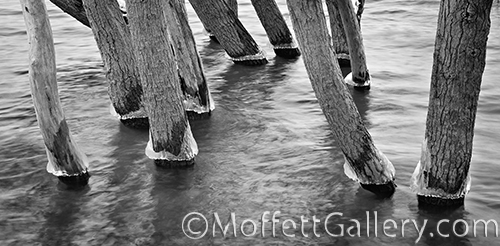
Iced Up
Trees and water. A landscape photographers favorite subjects. Even though many photographers shoot these subjects, they are always different. This happens due to our individual vision. I see things completely different than others and they from me. It doesn’t necessarily make one better than the other, just different. The key to creating great images is not to photograph like someone else, but to be consistent in creating images that capture your own vision. When that happens, you’ll begin to make images with feeling. Then you learn to see better. The subtleties of light and texture become not so subtle. You will see them all around you. The world becomes more beautiful as you learn to see.
This process of learning to see takes time and effort. It will not happen overnight. Study master artists. Study light. Look at the simple things in life. Photograph and analyze images. Photograph some more. As you do these things your style and vision will become evident over time. You will start to be drawn to certain subject matter and certain light qualities. Your work will mature and improve. As you evolve as an artist, listen to your heart as it will usually be right. Don’t try to be someone else, create your own style. Continue to study the masters and let their work influence you as you push your work in your own direction. Most of all, have fun.
by tmoffett | Jan 18, 2011 | Black and White, Photo tips, Ramblings
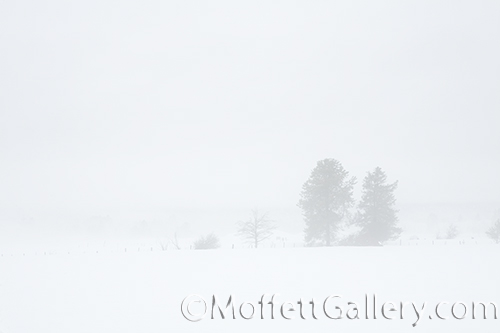
Stormy Afternoon, McCall, Idaho
I spent the extended weekend with Christeena in McCall celebrating our 21st anniversary. This was a much needed getaway! Stress had crept into our lives and getting away from it all for a few days always seems to do the trick to help us return to a more normal life. We had a wonderful time just relaxing, driving and photographing. We had stormy weather nearly the entire time, but that has never hampered my ability to have fun and make new photographs. After attending church on Sunday, we went for a drive to check out the scenery. We headed out in a direction we had never been and were not disappointed. It was raining a bit, and then the fog rolled in. It really was beautiful. I love the fog, at least photographing in it. Driving in it is a different story. I don’t get the opportunity to photograph foggy scenes very often, so I happily took advantage of this moment.
When photographing in the fog, proper exposure is critical. If you don’t adjust your exposure settings, then your image will end up dark and muddy looking. I like the light, airy feeling of the fog, so I shift my exposure a full 2 stops. This will push the image to the light side, but should not over-expose anything. Learning to use the exposure compensation settings on your camera will make making these corrections simple.
by tmoffett | Jan 10, 2011 | Color, Landscape
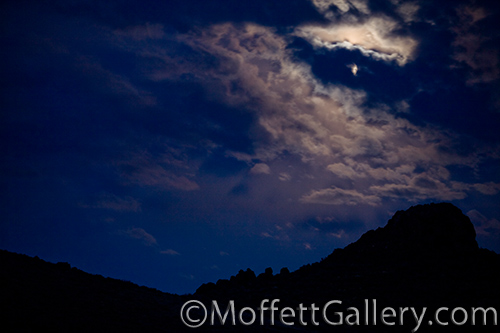
Owyhees with a Full Moon
I love being in the outdoors. A fall night found me out with one of my boys on a scouting trip in the Owyhees when the clouds rolled in and the light from the full moon illuminated them in a mysterious way. I was in awe as I watched the constant change as the clouds moved and covered the moon, then later the sky would open back up and be full of light. I took several exposures of the night sky, some with a silhouetted foreground and others without. This image, to me really shows the feeling of the night. The deep blues and partial cloud cover exudes a feeling of wonder, quite moody. It is what I look for, images that evoke feeling. The subject matter really doesn’t matter if the light is right.







Recent Comments